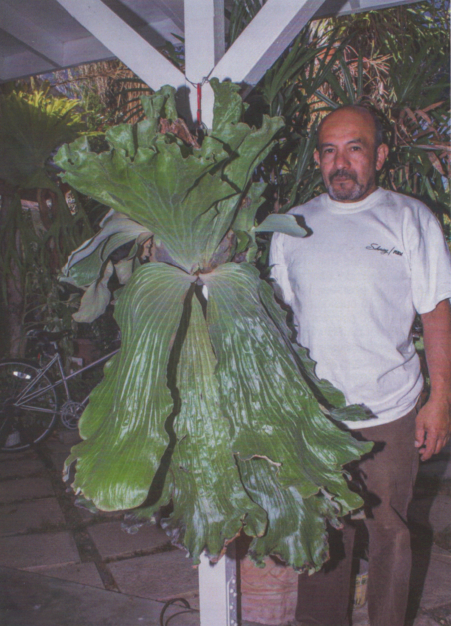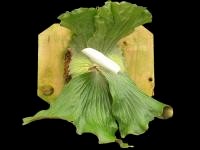|
P. elemaria
Photo LAIFS Journal |
|
Both P. elephantotis and P. stemaria are found together in the forests of West Africa and need an 80°F humid environment with temps above 50°F so should probably be grown in a greenhouse. The P. elephantotis is native to dry forests whereas the P. stemaria is reported to like frequent watering. Nothing has been reported on the watering of the P. elemaria. P. elemaria appears more tolerant to cold than its parents. It grows out doors in So. California.
|
|
|
| The reader must realize that many hybrids are a result of accidental mixing of spore when similar plants are grown in close proximity. Even when spore from two species are intentionally crossed, it is always possible for a spore from an unintended species to contaminate the intended cross. After repeated attempts and proof that their progeny have the same traits, then we can agree as to the parentage and define it as a new hybrid and not just a sport or cultivar of a species. This can take a long time with slow growing platyceriums and experienced growers are hesitant to jump the gun and name a hybrid. So when we discuss hybrids, we need to consider all the variables. Soon we will have more definite DNA studies. Until DNA testing is more readily available, and established parent base lines defined, we must look at and compare traits from other species and deduct a logical inference to the actual parentage and these are considered individual plants and not necessarily a hybrids. |
|
[ Plant Glossary ] |

 There
is a cultivar of P. elemaria cv. sanchez that may not be
deciduous. Only slight browning of the shield fronds has been
reported. Whereas the P. stemaria has short lived shield
fronds, and the P. elephantotis massive shield fronds which
turn brown in the spring. It is not known if the fertile fronds
are harry on the underside like P. stemaria. It may be
the photos, but the shield fronds show a yellowish green near the bud.
There
is a cultivar of P. elemaria cv. sanchez that may not be
deciduous. Only slight browning of the shield fronds has been
reported. Whereas the P. stemaria has short lived shield
fronds, and the P. elephantotis massive shield fronds which
turn brown in the spring. It is not known if the fertile fronds
are harry on the underside like P. stemaria. It may be
the photos, but the shield fronds show a yellowish green near the bud.